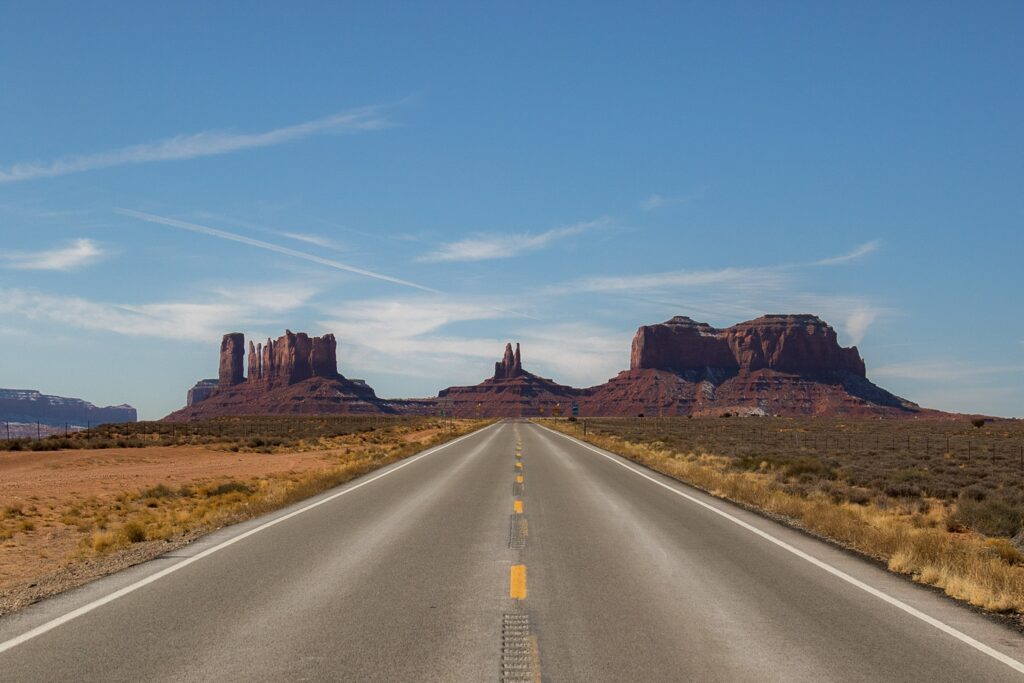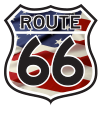

The United States’ most historic route — Route 66 — is affiliated with some of the nation’s most iconic landmarks. From the Gateway Arch in St Louis to the Santa Monica Pier in Los Angeles, the Mother Road has ties with numerous destinations in America that are so popular as to be household names – including in homes outside the continental United States. Even the Grand Canyon has an association with the Old Route, although portions of the Grand Canyon are hundreds of miles away from Route 66.
Since world-famous road trip destinations such as these are affiliated with Route 66, then you may wonder if Monument Valley – arguably the most frequently filmed location in the entire country – is on the list as well. Truth be told, it isn’t. But don’t fret – Route 66 Tours will take you to see the majesty of this world-famous location, which is one of the reasons why more people choose us as their preferred road trip providers for a truly panoramic journey of Southwest USA.
Let’s explore what makes Monument Valley a glorious sight to behold and the crowning jewel of the Navajo nation.
What is so special about visiting Monument Valley?
Spanning nearly 92,000 acres (over 143 square miles) and a three hour drive northeast of Flagstaff, on Route 66, Monument Valley is one of the most visually breathtaking expanses in the world. Straddling Arizona to the south and Utah to the north and whose highest point is over 5,000 feet above sea level, Monument Valley is aptly titled, since its Navajo name — Tse’Bii’Ndzisgaii — translates to “valley of the rocks.” Rock is undoubtedly Monument Valley’s most salient feature, evidenced by its robust sandstone buttes that reach an impressive 1,000 feet over the valley floor. The visual beauty of Monument Valley is reason enough for its iconic status.
However, its history is every bit as noteworthy. Millions of years before humans roamed the Earth, naturally occurring processes made Monument Valley what it is today, as the Rocky Mountains deposited labyrinthine layers of sediment over time turning a formerly unremarkable basin into a central piece of the Colorado Plateau.
The history and visual magnificence of Monument Valley are what make it among the more spectacular tourist attractions in the United States.
Is Monument Valley depicted in any major motion pictures?
If you’ve seen images of Monument Valley, you’ve undoubtedly said to yourself some variation of “Gee, that place looks familiar.” That’s probably because you have seen Monument Valley at a theatre near you. Here is a partial list of some of the more recent movies, including some animated films:
- Jurassic World: Fallen Kingdom (2018)
- Transformers: Age of Extinction (2014)
- The Lego Movie (2014)
- The Lone Ranger (2013)
- Cars (2006)
- Windtalkers (2002)
- Vertical Limit (2000)
- Mission: Impossible 2 (2000)
- Wild America (1997)
- Sunchaser (1996)
- An American Tail: Fievel Goes West (1991)
- Thelma & Louise (1991)
- Back to the Future Part III (1990)
- Indiana Jones and the Last Crusade (1989)
These are just some of the more recent prominent movies in which Monument Valley was featured. But there are a host of others from the mid-20th century, including Kit Carson (1940), Billy the Kid (1941), How The West Was Won (1962), The Greatest Story Ever Told (1965) and 2001: A Space Odyssey (1968).
Cinema’s depiction of majestic Monument Valley may be best remembered in the Academy Award-winning drama Forrest Gump, which won Best Picture in 1994 and stars Tom Hanks as the film’s protagonist. Later on in the film, when Forrest has been on a (literally) cross-country jog for no apparent reason aside from the fact he “just felt like running,” Forrest comes to an abrupt stop on U.S. Route 163, which cuts directly into the heart of Monument Valley. It’s here where Forrest says to his followers running behind him, “I’m pretty tired; think I’ll go home now,” thus ending his over three-year ultramarathon.
Portions of Route 163 lie within Navajo land and the highway itself stretches approximately 64 miles between Arizona and Utah.
Why is Monument Valley associated with Route 66?
As previously noted, Route 66 does not go anywhere near Monument Valley. At its closest point, Monument Valley is 170 miles to the northeast from Route 66 near Flagstaff, Arizona. The Grand Canyon, meanwhile, is a mere 57 miles north of Route 66 in Williams, Arizona, and Diamond Creek Beach (i.e. Grand Canyon) is only 19 miles north of Route 66 in Peach Springs, Arizona.
So it raises the question: Why is Monument Valley linked to Route 66 in the first place?
There’s no perfect answer to this. It may be because the Old Route, when it was part of the highway grid, ran through Arizona. It could also be because both Monument Valley and Route 66 are two geographical highlights of authentic Americana, the two somehow got intertwined. To theorise even further, the association may simply be a product of misunderstanding or flawed assumptions drawn from internet searches.
Whatever the case, even though you can’t access Monument Valley from Route 66, a day trip off the beaten path is well worth it, if for no other reason than to say you’ve seen the iconic national park in person, not just on the big screen.
But there are several other fantastic sights to see that are worth veering from Route 66 to access. Below are just a few:
Grand Canyon National ParkThe Grand Canyon is arguably the most visually impressive gorges in the world, let alone the United States. Grand Canyon National Park is the best place to drink it all in, lying north of Route 66 if you’re in Arizona. Celebrating its 100th anniversary in 2019, the Grand Canyon is appropriately named, covering over 1.2 million acres — or approximately 1,902 square miles — and is one of the natural wonders of the world. Grand Canyon National Park is similarly sprawling, encompassing roughly 280 miles. You truly don’t get a sense for just how big the Grand Canyon is unless you’re there, which is why visiting it should be on any road trip lover’s bucket list.
Santa Fe
Route 66 has been decommissioned, but when it was up and running, the Mother Road ran through Santa Fe. New Mexico’s capital city, Santa Fe is New Mexico’s fourth largest but is the state’s most historic city by a mile, rife with art galleries like the Georgia O’Keeffe Museum, landmarks like Santa Fe Plaza and architectural marvels like Palace of the Governors.
Hoover Dam
Located right around 75 miles from Route 66 northwest of Kingman, Arizona is the Hoover Dam a Mecca of modern engineering. The Hoover Dam is another historic landmark since it was built in 1930, created the nation’s largest reservoir (Lake Mead) and has the capacity to hold 325,000 gallons of water. Although it has since been superseded by the Oroville Dam in California, the Hoover was the world’s tallest dam for nearly 40 years.
Much like the Grand Canyon, only an in-person visit affords a full appreciation of the Hoover Dam’s immensity.
Route 66 Tours is a fully guided road trip and not just because we allow you to explore all of the most must-see portions of the Old Route — we also take you to locations that aren’t on Route 66 per se, but certainly ought to be. One of those places is Monument Valley. Book an incredible road trip that you and your travelling companion will never forget or regret. Just ask the people who’ve joined us. The only thing you’ll regret is why you didn’t choose Route 66 Tours sooner. Join us today.







